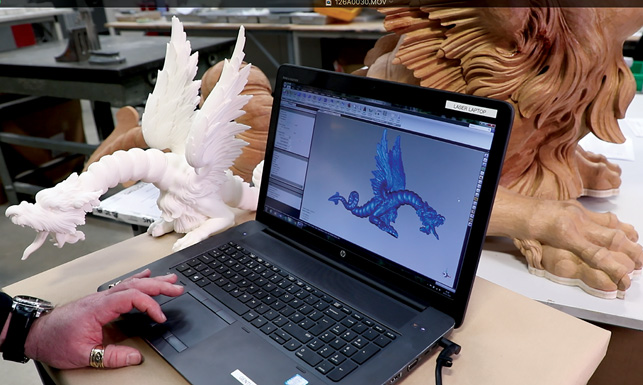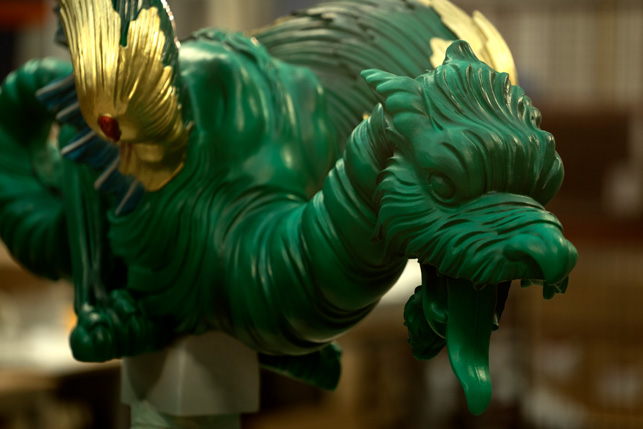
The Great Pagoda at Kew Gardens is not only a 250-year-old Royal Park landmark and a UNESCO World Heritage Site, visited by around 1.8 million people annually.
It is also home to 80 dragons. Commissioned in 1761 in the reign of King George III, the Pagoda’s dragons were removed some twenty years after its opening, during repairs to the roof – and they did not return until very recently.
Historic Royal Palaces, the independent charity that takes care of Kew Palace among other properties, needed to authentically replicate the dragons, but in a way that would withstand the famously inclement English weather and not overload the towering building.
3D Systems – Makers of dragons
The On Demand Manufacturing team at 3D Systems delivered lightweight, durable dragons, achieved by scanning the designs of a master wood carver with a Faro Design ScanArm and then using 3DS’s Geomagic Design X software, Selective Laser Sintering (SLS) 3D printing – not to mention a great deal of sympathetic, high-quality finishing.
The use of CAD enabled the team to innovate while creating the dragons, including hidden features to make it easier to mount them in the pagoda, for example, and giving them a lightweight, hollow structure that makes them 60 per cent lighter than the equivalent dragon made of wood.
This weight reduction means less stress for the historic building.
The CAD data, meanwhile, made it possible to scale the dragons and produce them in a variety of sizes, ranging from 1.15m to 1.85m in length.
Says Craig Hatto, project director at Historic Royal Palaces: “The engineering skill of 3D Systems’ team, the opportunity to lightweight the dragon statues, and the material longevity of SLS 3D printing were key considerations for this project.”
It was also important that 3D printing should be used alongside traditional techniques and materials.
The dragons at the base of the pagoda, for example, are wood-carved. Those higher up in the structure needed a different approach.
To decide on the colouration of the beasts, the curation team at Kew painstakingly researched every aspect of each dragon’s form.
Very few visual records of the original dragons exist and reference was instead taken from descriptions in poetry that described their colours, from a painting tracked down to a private collection and from analysis of paint fragments.
The final forms were then printed on 3D Systems’ SLS machines in DuraForm PA, a polyamide 12 nylon material capable of giving them a look and feel comparable to their original wood-carved counterparts – and making them just as fearsome.
How To Train Your Dragons

The wooden sculptures are laser-scanned to high accuracy and resolution

The laser scan data is used as the basis for all subsquent design and engineering work

Dragon parts are built using 3D Systems’ arsenal of SLS machines and Nylon powder

The team at 3D Systems’ High Wycombe facility begin assembly of the dragons

3D Systems’ in-house paint and finishing facilities are used and paint developed specially by the curation team is applied

The dragons are complex assemblies, designed to maximise resistance to high winds

Yes, that’s real gold leaf

There are 72 dragons, of varying sizes, and each one is slightly different

The dragons feature all sorts of hidden functional devices to enable them to look good and stay in place

In-situ, the dragons look amazing and are expected to guard the pagoda for upwards of 25 years






